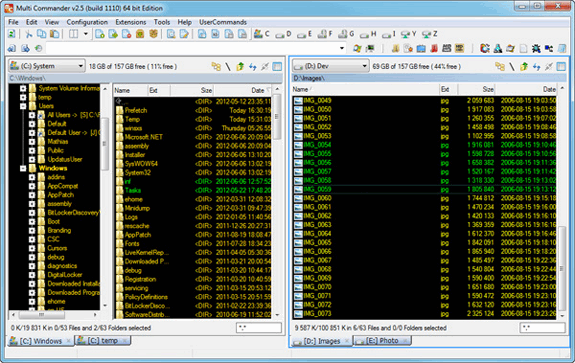

- Multicommander vs mucommander full#
- Multicommander vs mucommander windows 10#
- Multicommander vs mucommander series#
Windows Explorer provides you with the essential features required to work with files and folders, but it is a traditional File manager without any advanced features.
Multicommander vs mucommander windows 10#
Windows 10 File Explorer is used for managing files and folders on your computer and is usually pinned to the taskbar. Before beginning with the Windows Explorer alternative, let’s see what is File Explorer and where is File Explorer in Windows 10 located. While it expands impressively on the feature set of the traditional Windows file manager, the standard choice will probably serve most users just as well.Windows Explorer, now rechristened “File Explorer” in Windows 10 is the default file manager for Windows 10.
Multicommander vs mucommander full#
Archiving functions are also available, and your archives come equipped with the full range of traditional features.įreeCommander is freeware, so whether or not it's the right fit for you really comes down to whether or not you'll use it. You can expand your control on a more macro level with a tool that automatically estimates the size of files and folders. Digging even deeper the file viewer lets you look at your files in a number of formats that include binary, hex, text or image. Further adding to the value are a number of different plug-ins you can use to expand your user experience and make it unique. You can compress or split files directly through the interface, in addition to traditional copy, rename, and moving options.

But beyond that, you have a lot of control over the actual alteration of your files.

You can upload files directly from your machine through the use of that integtated FTP and even designate entire folders for FTP so that they automatically get uploaded to your web host. If you do any direct website management or otherwise need to upload a large number of files on a regular basis, the FTP integration makes FreeComander almost a practical necessity. Whether those commands are right for you will really decide whether or not you should replace your existing file manager with FreeCommander. It's not the most intuitive design, since FreeCommander tends to lean into text-based rather than icon indicators, but with a little exploration, you can get used to the more complex commands available here in no time at all.
Multicommander vs mucommander series#
Getting used to advanced functions is handled through a series of tabs along the top of the screen as well as some pull down menus. A double pane window structure makes it easy for you to keep track of where you are in your directory system and make transfers from one folder to another a simple task. Anyone who's worked with a Windows machine in the past two decades won't have much trouble getting acquainted with the interface. On the surface, FreeCommander doesn't look that much different from a traditional Windows file manager. Despite its depth, learning the ins and outs is a pretty simple process, but the deeper you dig, the more quality of life tools you'll find at your fingertips. If you're a user who wants more expansive control over what's happening on your hard drive, FreeCommander is a great alternative. It's just that it gets the job done without much in the way of deeper features or bells and whistles. That's not to say that Windows file manager is bad. Overall Opinion: The native File Explorer available with a Windows operating system isn't exactly a revelation.


 0 kommentar(er)
0 kommentar(er)
